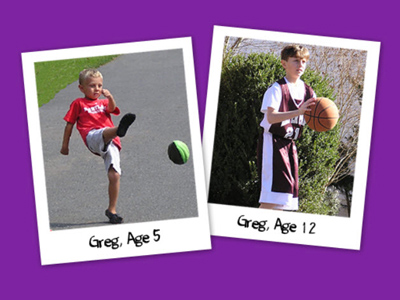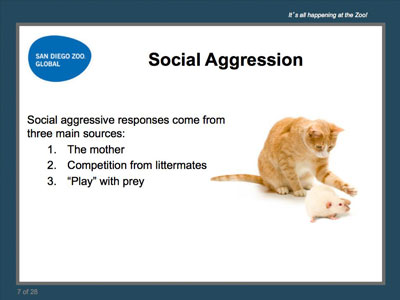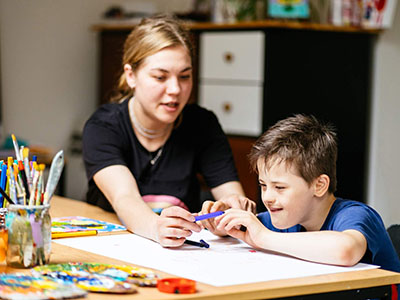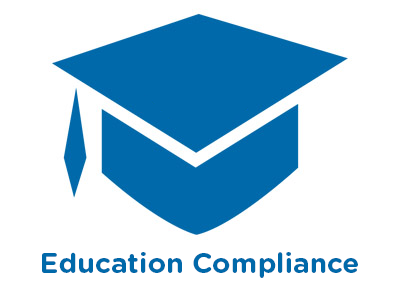 |
Developing Important and Successful Communications Skills (CDA 3) |
2.00 |
Unleash the communication superpowers of your young learners! This course equips you with age-appropriate tips to help infants, toddlers, preschoolers, and school-age children blossom. Watch their language and social-emotional skills soar as they confidently navigate transitions, engage in enriching play and learning, build meaningful relationships, and become empowered problem-solvers. |
 |
Child Abuse Prevention and Awareness |
1.25 |
Unfortunately, child abuse is a prevalent issue in today's world. Child care workers and volunteers, coaches, and others who work with children must be knowledgeable about the topic to ensure children's safety. This course will make you aware of the many issues related to child abuse and help you recognize and prevent child abuse within and outside of program walls. It offers advice about how to respond to a child who divulges abusive information and what to do with this information. As someone who works with children you will learn how to protect the child, your organization, and yourself from accusations of abuse. |
 |
The Neuropsychology of Trauma and How It Impacts Learning |
1.00 |
Understanding the root of trauma and how we can cultivate a well- functioning classroom is an essential task for educators. How do VUCA (volatility/uncertainty/complexity/ambiguity) impact child and adolescent development? How do ACEs (adverse childhood experiences) impact child and adolescent development? How do SCARF needs (status/certainty/autonomy/relatedness/fairness) impact child and adolescent development? This workshop gives participants insight into the workings of the sympathetic (fight or flight) and parasympathetic nervous system (rest and digest) and their impact on learning. |
 |
Employee Performance: Resolving Conflicts |
1.50 |
Understanding the different styles of conflict resolution can help you identify the most appropriate process to use when addressing conflicts in the workplace. There are two general types of conflict resolution: indirect and direct.
In this course you will learn to: identify conflict resolution styles, resolve conflicts in the workplace, resolve team conflicts, and identify the communication skills required to resolve conflicts. |
 |
Employee Performance: Resolving Conflicts (Instructor Guide) |
1.50 |
Understanding the different styles of conflict resolution can help you identify the most appropriate process to use when addressing conflicts in the workplace. There are two general types of conflict resolution: indirect and direct.
In this course you will learn to: identify conflict resolution styles, resolve conflicts in the workplace, resolve team conflicts, and identify the communication skills required to resolve conflicts.
This Instructor's Edition of this course includes notes and suggestions to assist you in presenting the material, whether in an in-person classroom setting, or as an instructor-led online or distance-learning course. It also provides you with the answers to questions found in mid-lesson activities, as well as in the quiz that concludes the course. |
 |
Exploring the Continuum of Developmental Tasks of Children in Grades K-6 for Paraprofessionals |
1.00 |
Understanding the continuum of ongoing development during the school age years provides the foundation for planning and implementing successful strategies and ideas as a paraprofessional. When staff know and understand the developmental tasks of students in Kindergarten through 6th grade, they can work with colleagues to design effective environments, plan engaging activities, set appropriate expectations and limits, and guide children’s behavior effectively. Training all staff members on the foundations of child development, no matter their role in the school, is a vital part of student success. |
 |
Exploring the Continuum of Developmental Tasks of School-Age Children from 5 to 12 |
2.00 |
Understanding the continuum of ongoing development between the ages of 5 and 12 provides the foundation for planning and implementing successful school-age programs. When staff know and understand the developmental tasks of school-age children, they can work with children and colleagues to design effective environments, plan engaging activities, set appropriate expectations and limits, and guide children’s behavior effectively. |
 |
Course 01: Exploring the Continuum of Developmental Tasks of School-Age Children from 5 to 12 |
2.00 |
Understanding the continuum of ongoing development between the ages of 5 and 12 provides the foundation for planning and implementing successful school-age programs. When staff know and understand the developmental tasks of school-age children, they can work with children and colleagues to design effective environments, plan engaging activities, set appropriate expectations and limits, and guide children’s behavior effectively. |
 |
Quality Management: Implementing Quality Changes |
0.67 |
Understanding a process is the only way a process improvement team can effectively improve the process. The team must understand how the process currently functions before they can identify problems. In addition, in order to understand how potential changes will affect the process, the team needs to understand specific elements of the process, as well as the process as a whole.
In this course you will learn to: identify the elements of a process, as well as techniques used to streamline a process, and measure various aspects of a process. |
 |
Quality Management: Implementing Quality Changes (Instructor Guide) |
0.67 |
Understanding a process is the only way a process improvement team can effectively improve the process. The team must understand how the process currently functions before they can identify problems. In addition, in order to understand how potential changes will affect the process, the team needs to understand specific elements of the process, as well as the process as a whole.
In this course you will learn to: identify the elements of a process, as well as techniques used to streamline a process, and measure various aspects of a process.
This Instructor's Edition of this course includes notes and suggestions to assist you in presenting the material, whether in an in-person classroom setting or as an instructor-led online or distance-learning course. It also provides you with the answers to questions found in mid-lesson activities, as well as in the quiz that concludes the course. |
 |
Explorando cuatro áreas del desarrollo en edad escolar (Spanish) Exploring Four Areas of School-Age Development |
1.50 |
Una de las formas más útiles de comprender las necesidades e intereses de los jóvenes de entre 5 y 12 años es examinar su desarrollo desde cuatro perspectivas diferentes: desarrollo físico, desarrollo cognitivo, desarrollo social y desarrollo emocional.
One of the most helpful ways to gain an understanding of the needs and interests of youth between 5 and 12 is to examine their development from four different perspectives: Physical Development, Cognitive Development, Social Development, and Emotional Development. |
 |
Solving Behavioral Problems. Aggression – Its Causes and Solutions for its Reduction |
1.00 |
Typically, animal care workers focus their training efforts on encouraging an animal to do something that it isn’t yet doing or training the animal to not do something that it is doing. At birth, all animals come genetically programmed for defense. From the human perspective, these behaviors are often closely linked with aggression. This presentation will focus on a variety of common behavioral problems encountered with animals in a zoological setting with special attention paid to the reduction of aggression. The presentation will identify the classes of animals that pose serious risks to animal care workers and develop strategies for reducing the risks when working in close proximity with those taxa. |
 |
Spinal Motion Restriction Decisions |
1.50 |
Two of the University of Rochester’s finest educators discuss the decision-making that is involved with Spinal Motion Restriction.This enlightening discussion offers information that will allow providers to better interpret standing protocols.Subsequently providers will be able to create and execute better treatment plans.
Jeremy Cushman M.D., M.S., NYS Paramedic is the Chief of the Division of Prehospital Medicine, Department of Emergency Medicine, at the University of Rochester.
Mark Gestring, M.D., F.A.C.S., is the Director of Adult Trauma at the University of Rochester’s Regional Trauma Center.
Enjoy the conversation as these two experts in their respective fields escort you through the nuance that every provider should consider when treating a patient with possible spinal trauma. |
 |
Child Care in Mixed-Age Groupings (CDA 1 & 5) |
2.00 |
Transform your family child care program into a haven for diverse learners! Unleash the magic of mixed-age learning with this practical course. Discover innovative activities, explore creative environment design, and unlock the power of age-appropriate resources. Watch your program blossom as you nurture the individual growth and development of every child. |
 |
Exploring Curriculum Activities |
2.00 |
Today, more than ever, programs are being asked to integrate academic activities into programming. Improving academic performance and achievement requires us to intentionally create opportunities for children and youth to learn and discover their own interests, strengths, and talents within the academic areas. This course offers an overview of the six curriculum areas as defined by the California Department of Education, provides sample activities that address these curriculum areas, and explores the importance of including academics in a well-balanced program. |
 |
Conciencia Cognitiva (Spanish) Cognitive Awareness |
1.25 |
Todas las personas han tenido experiencias específicas durante su vida que han moldeado su forma de pensar. Este curso está dirigido a personas que enfrentan pensamientos erróneos y comportamientos autodestructivos debido a experiencias pasadas. Está diseñado para ayudar a las personas a aprender cómo y por qué piensan como lo hacen. También es para enseñar habilidades cognitivas que ayuden con el autodesarrollo. Al final de este curso, esperamos que se convierta en una persona más saludable, feliz y productiva que pueda disolver los obstáculos y limitaciones que a menudo nos imponemos a nosotros mismos.
All people have had specific experiences during their life that have shaped the way they think. This course is geared toward people dealing with faulty thinking and self-destructive behaviors due to past experiences. It is designed to help people learn how and why they think the way they do. It is also to teach cognitive skills to help with self-development. By the end of this course, we hope you become a healthier, happier, more productive person who can dissolve obstacles and limitations that we often place on ourselves. |
 |
Creating an Inclusive Classroom for Paraprofessionals |
1.25 |
To make our schools emotionally and physically safe places, we must make sure that the needs of all students are being met. We must remember that students with disabilities are like all other students, and exhibit more similarities than differences when compared with peers of the same age. When we provide students with the least restrictive environment, inclusion becomes critical. Paraprofessionals that understand inclusion are better able to provide an environment that includes all students, regardless of their individual barriers. |
 |
Conducting Meetings: Listening Effectively and Asking Questions (Instructor Guide) |
0.50 |
To communicate effectively during a meeting, you have to listen and ask appropriate questions. Listening and questioning are two interdependent skills that will help you create a positive climate, develop positive dialog, and achieve the group’s goals.
By listening and questioning effectively, you’ll actively engage yourself and others in the meeting. Actively participating will enable you to quickly identify and address other participants’ thoughts, ideas, and concerns. Facilitating communication in this manner will foster individual and group success.
In this course you will learn to: identify the main causes of conflict, the ways to resolve conflict in meetings, and the common difficult personality types in meetings, and identify the characteristics of a positive and negative climate, and the steps to build a positive climate when communicating.
This Instructor's Edition of this course includes notes and suggestions to assist you in presenting the material, whether in an in-person classroom setting, or as an instructor-led online or distance-learning course. It also provides you with the answers to questions found in mid-lesson activities, as well as in the quiz that concludes the course. |
 |
Conducting Meetings: Listening Effectively and Asking Questions |
0.50 |
To communicate effectively during a meeting, you have to listen and ask appropriate questions. Listening and questioning are two interdependent skills that will help you create a positive climate, develop positive dialog, and achieve the group’s goals.
By listening and questioning effectively, you’ll actively engage yourself and others in the meeting. Actively participating will enable you to quickly identify and address other participants’ thoughts, ideas, and concerns. Facilitating communication in this manner will foster individual and group success.
In this course you will learn to: identify the main causes of conflict, the ways to resolve conflict in meetings, and the common difficult personality types in meetings, and identify the characteristics of a positive and negative climate, and the steps to build a positive climate when communicating. |
 |
Advanced Interpersonal Communication: Communication Styles and Methods |
0.75 |
To be successful in the workplace, you must be able to effectively communicate and cooperate with clients and co-workers. Learning about the four types of communication styles helps a listener understand a speaker’s perspective. It also helps a speaker understand how their communication affects the listener.
In this course you will learn: to identify primary and secondary communication styles, and to communicate using various verbal and nonverbal modes of communication. |
 |
Advanced Interpersonal Communication: Communication Styles and Methods (Instructor Guide) |
0.75 |
To be successful in the workplace, you must be able to effectively communicate and cooperate with clients and co-workers. Learning about the four types of communication styles helps a listener understand a speaker’s perspective. It also helps a speaker understand how their communication affects the listener.
In this course you will learn: to identify primary and secondary communication styles, and to communicate using various verbal and nonverbal modes of communication.
This Instructor's Edition of this course includes notes and suggestions to assist you in presenting the material, whether in an in-person classroom setting or as an instructor-led online or distance-learning course. It also provides you with the answers to questions found in mid-lesson activities, as well as in the quiz that concludes the course. |
 |
Title IX |
1.00 |
Title IX of the Education Amendments of 1972 prohibits sexual discrimination in educational institutions that receive federal funding. It applies to the vast majority of colleges and universities—public, private, and parochial—and has a broad scope. Under Title IX, discrimination on the basis of sex can include sexual harassment or sexual violence, such as rape, sexual assault, sexual battery, and sexual coercion. A school that fails to respond to and remedy the situation risks losing federal funding. |
 |
A Student Guide to Title IX |
0.50 |
Title IX is a federal civil rights law that prohibits sexual discrimination in educational institutions that receive federal funding. Under Title IX, discrimination on the basis of sex can include sexual harassment or sexual violence, such as rape, sexual assault, sexual battery, and sexual coercion. This course helps students to identify their rights under Title IX, and describe their school’s responsibilities under the law. |
 |
Leading with Head and Heart |
2.00 |
Those in leadership positions have a responsibility to both lead and manage.During this course, participants will understand the differences between the leadership and management, and the steps we can take to cultivate both. Participants will explore how leaders create safe, supportive environments by modeling self-awareness, interpersonal skills and growth mindset in how we lead and manage. |
 |
Design and Construction Process for Exhibits at the San Diego Zoo |
1.00 |
This webinar will walk you through the process from concept thru construction. You will understand how to read schematic documents and where to find information on construction documents to answer questions or feel more confident when interacting with design professionals or construction managers.
By the end of the course you should be familiar with the steps taken to complete a project. |


























